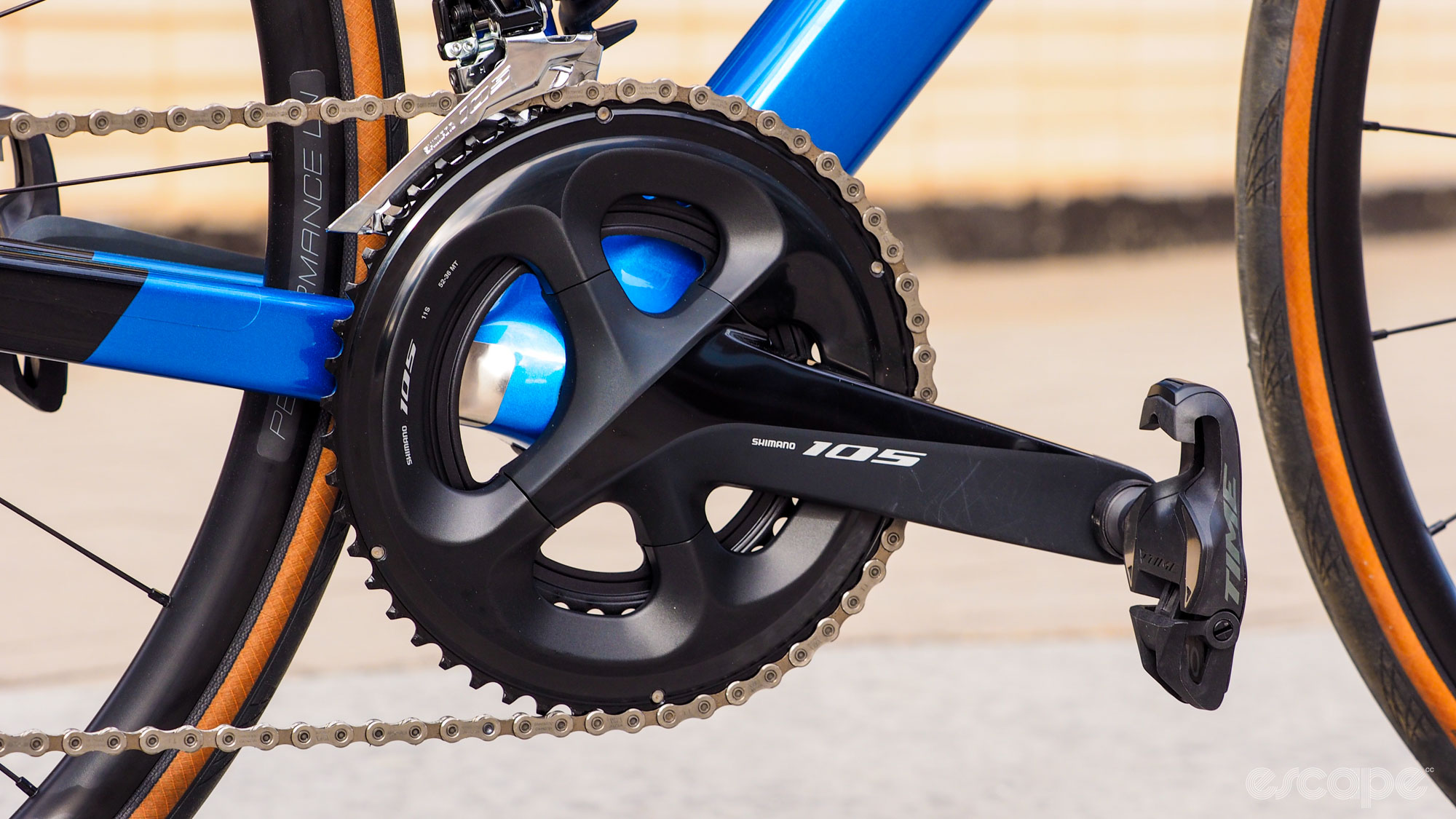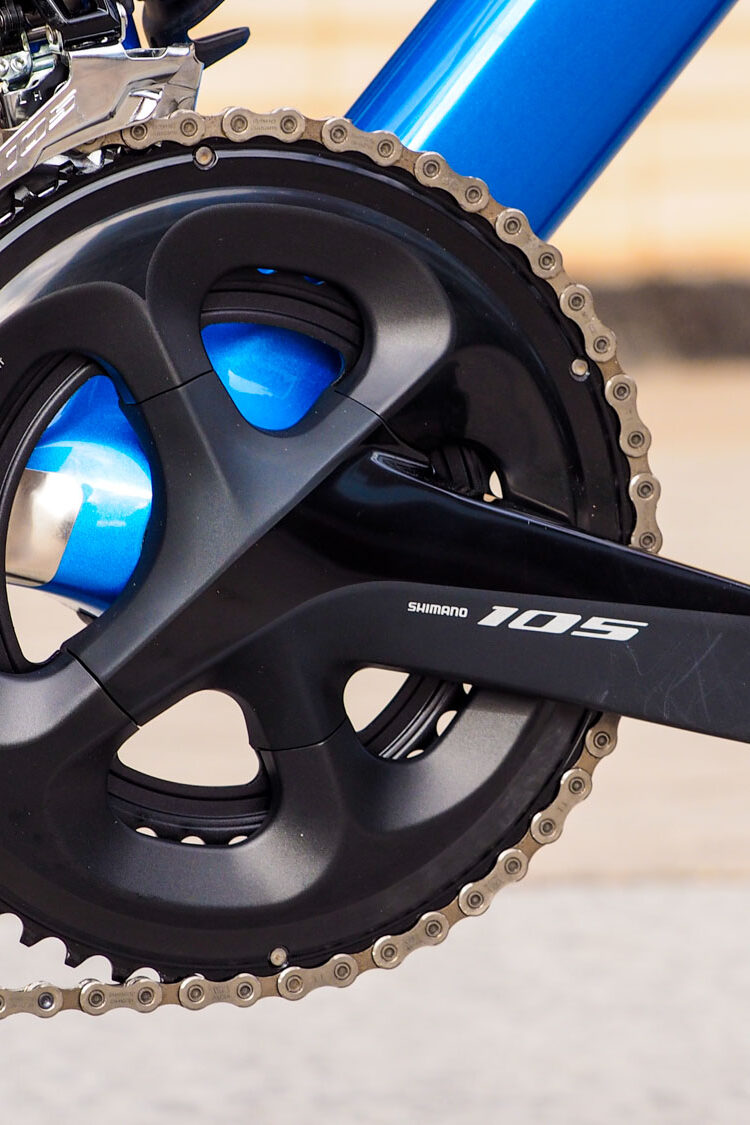Performance Process is an Escape Collective members podcast dedicated to going deep on the processes behind the best performances. You’ll find the latest episode of the podcast in this newsletter; a fortnightly hub for everything new in the world of performance tech, gains. Sign up for the e-mail newsletter here:

Performance Process
Better, faster, more aero. Enter your email address to have the fastest newsletter around delivered directly to your inbox!
Better, faster, more aero. Get the fastest newsletter around delivered directly to your inbox!
Rethinking crank length: Insights from cycling’s latest trend
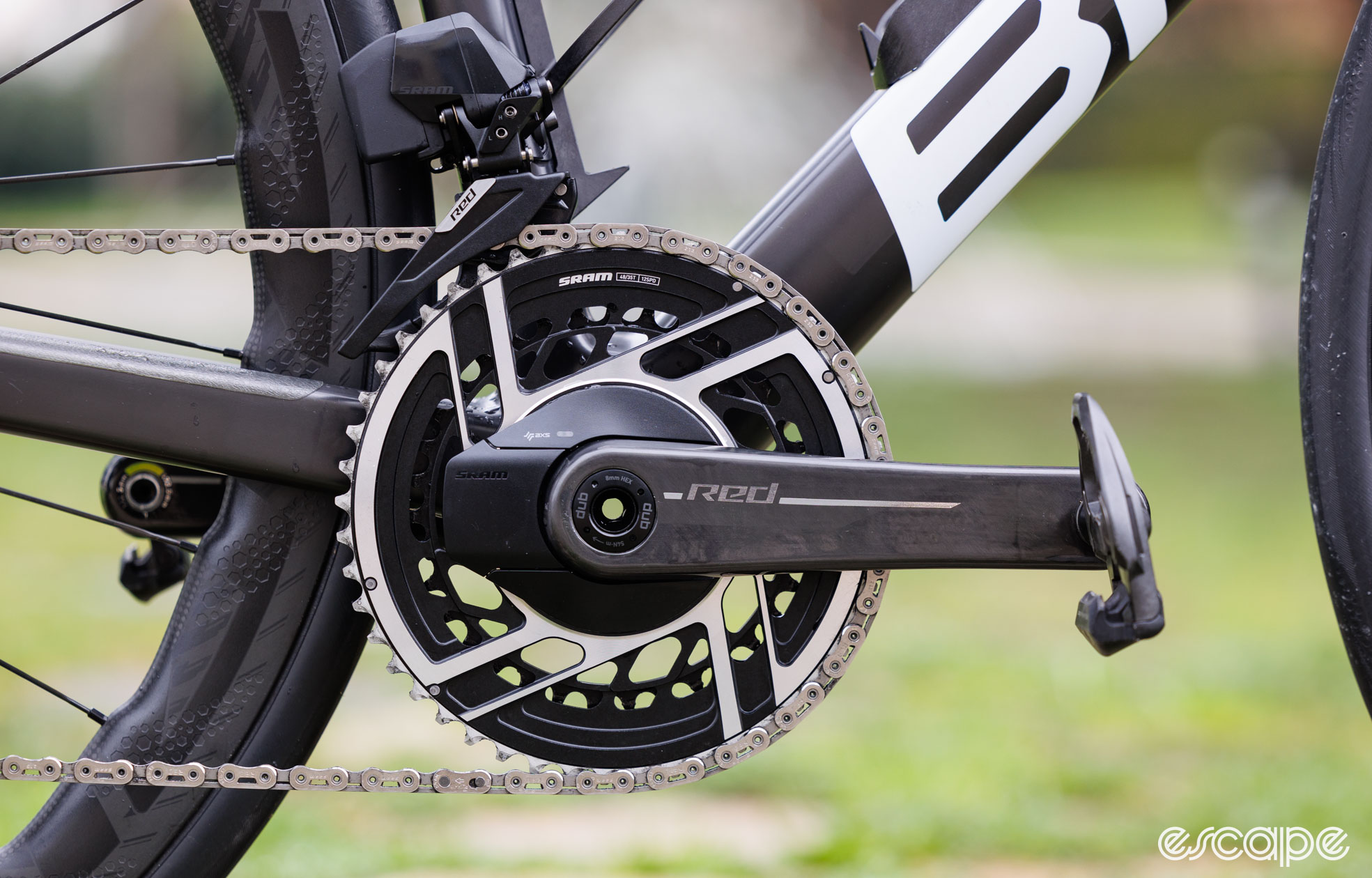
Shorter crankarms are on trend and in demand! Having first heard of triathletes switching to shorter crankarms to aid their running off the bike thanks to the improved hip comfort by opening the hip angle at the top dead centre of the pedal stroke , the trend caught on with time triallists more recently, who identified the more open hip angle as helpful in achieving lower torso angles and more agressive positions.
But the approach has now made its way into road racing, and with the likes of Tadej Pogačar and Remco Evenepoel reportedly now using shorter 165 mm cranks. With those superstars now winning on shorter cranks and the promise of improved comfort and better performance, many riders are wondering if they also need shorter cranks.
The short answer is; maybe. Manufacturers have almost always spec’d 170, 172.5, and 175 mm cranks on bikes with no guarantee those sizes are right for everyone. Many riders will benefit from shorter 165 or even 160 mm cranks.
The longer answer, though, is that simply switching out your cranks to a shorter option is also no guaranteed improvement. We all want increased comfort and simultaneously better performance, but in going shorter for shorter’s sake, we may miss that target.
In this week’s podcast we spin through the science, myths, and real-world applications of crank arm lengths. We ask if shorter really is better? How does crank length influence pedalling dynamics, efficiency, and comfort? And, crucially, we look at how to determine the correct crank length for you… be that shorter or longer.
To listen, just head to our members-only podcast page for access.
Weekly “gainz”
🚲 In this section we take a speedy look at what’s new in the world of performance and tech.
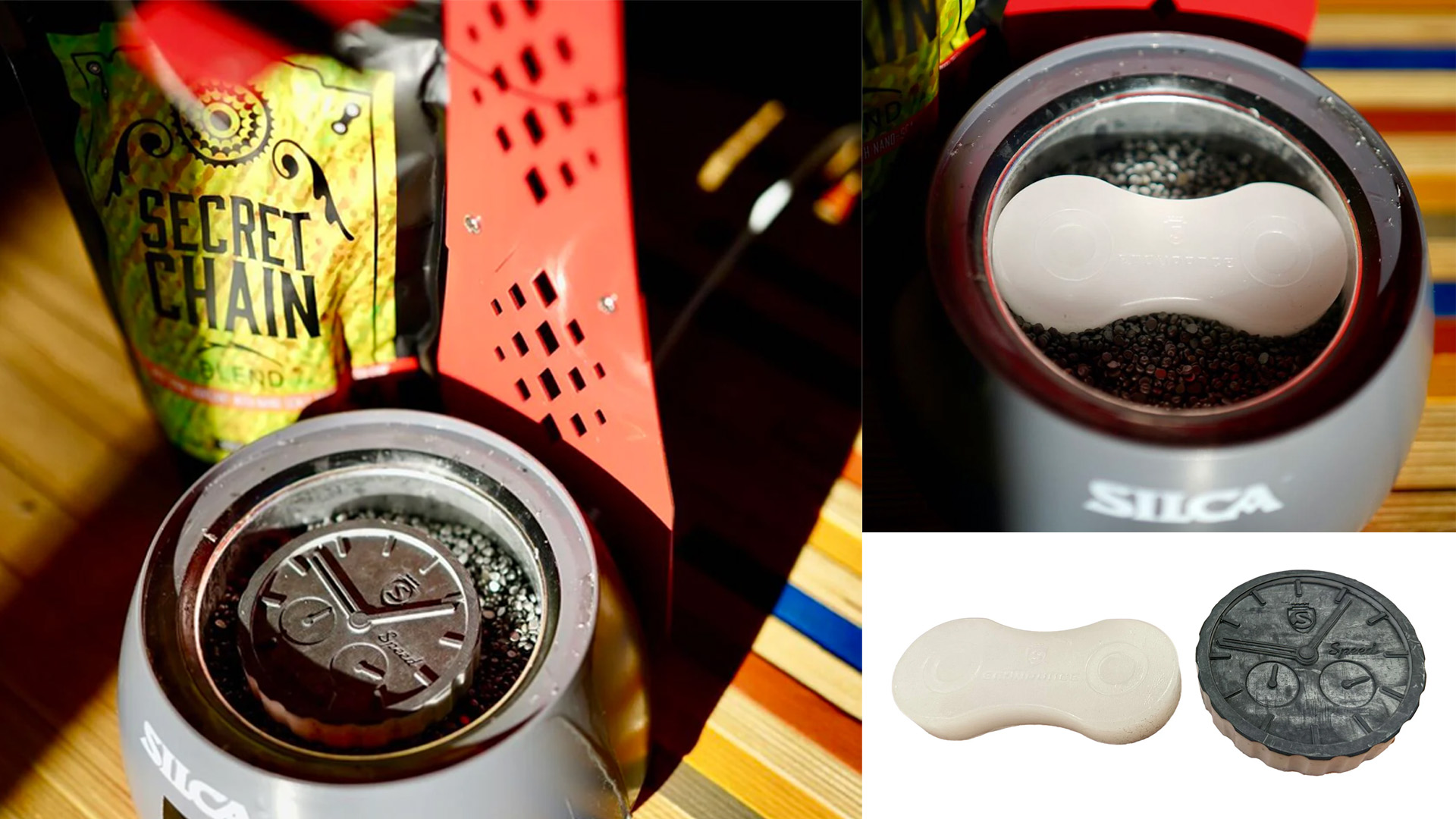
🕯️ Silca has announced two new additive chips designed to give the user the option to tailor its Super Secret hot melt chain wax blend for either more durability or more speed. The additives, handily named EnduranceChip and SpeedChip, simply drop into the brand’s hot melt wax, melting together with the wax and altering its composition allowing the user to optimise in either direction.
The base Super Secret mix is described as a blend of four different waxes, not just paraffin. Silca claims this blend is the secret behind its performance and durability; the new chips effectively allow the user to alter that blend in either direction at home.
If you think of the standard Super Secret blend as a middle-of-the-road formulation balancing durability and speed, adding an EnduranceChip – a semi-synthetic wax blend boasting longer molecular chain lengths – is said to improve treatment longevity by a claimed 2-3x and designed with longer endurance events in mind at the expense of outright speed.
Adding a SpeedChip, a full synthetic wax produced from the same exotic base oils used in Silca Synergetic, works in the opposite direction, sacrificing treatment longevity in return for improved chain efficiency.
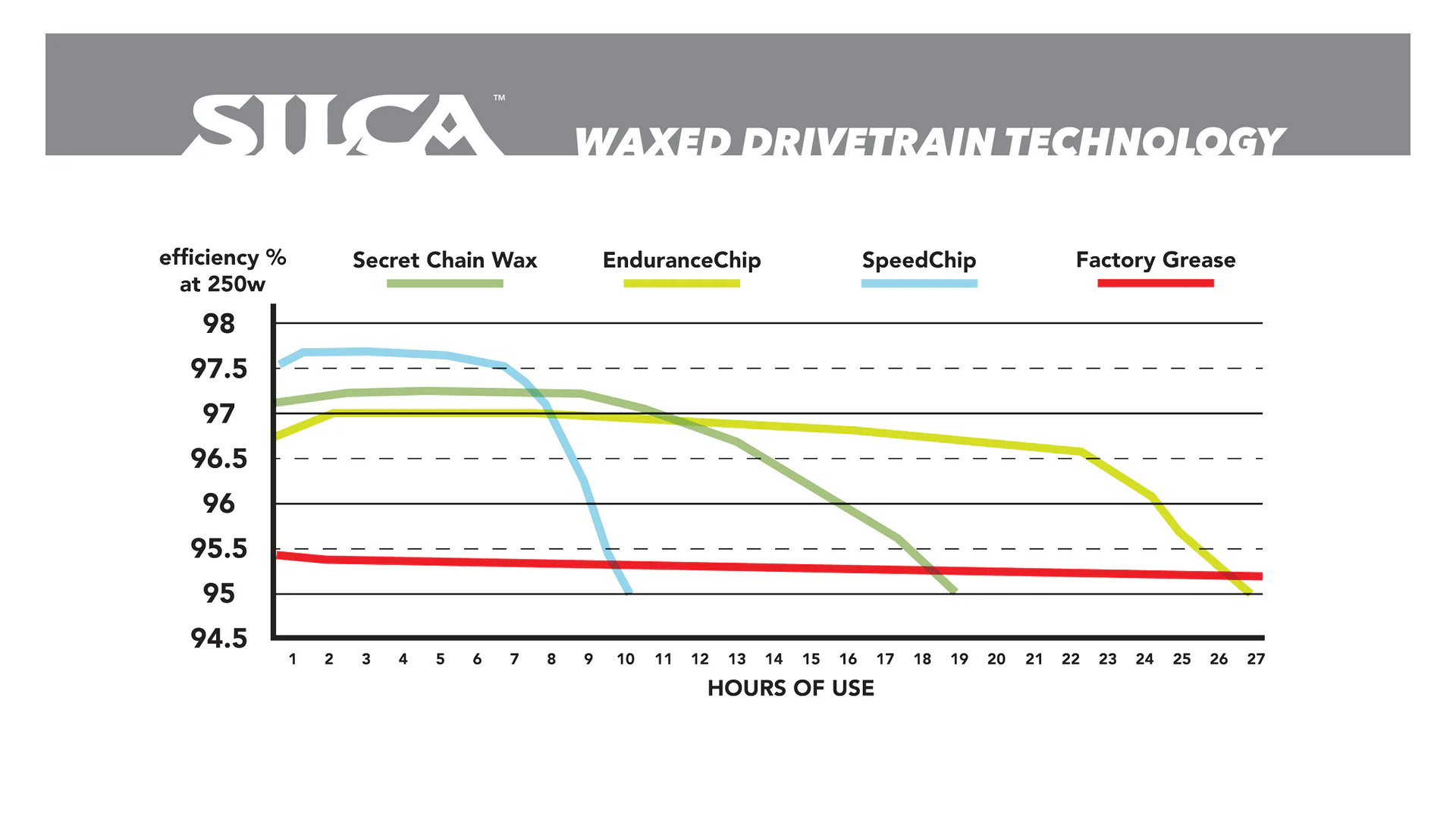
Silca claims the SpeedChip enhances efficiency by up to 0.6%, equating to a savings of 1.5 watts on a 250-watt input, ideal for events lasting up to 8 hours or around 200 kilometers (125 miles). In contrast, the EnduranceChip is said to double the longevity of the Secret Chain Blend application from 300-350 km to 600-800 km (up to 24 hours of use), with a claimed minimal efficiency loss of only 0.4% (1 watt on 250 watts input).
All that said, both chips permanently modify the wax they are added to, so once you pick one direction, that pot of hot melt blend is forever speedy or endurance-y. Both are also compatible with Silca’s StripChip when used as directed for that product. Price is US$29 per chip.
More info on Silca.cc

🪚 Ratio Technology, the UK-based company behind a whole host of aftermarket drivetrain conversion and upgrade kits, derailleur cages and chainrings, has announced its new SR45X cage and extender link designed to extend the range of a SRAM AXS road derailleur’s typical 33- or 36-tooth maximum cog size to work with 45-tooth cassettes and XPLR 1X setups.
The SR45X cage, which also doubles up as a replacement for a damaged SRAM XPLR derailleur cage, consists of 7075 aluminium plates and jockey wheels made from Delrin acetal thermoplastic, which is said to ensure robustness and precision manufacturing. Ratio claims the replacement cage is stiffer than the original thanks to additional cross-bracing screws.
Available in black or stainless silver, the cage’s claimed weight is 66 grams (in comparison a stock SRAM Red eTap AXS cage we have here weighs 61 grams), and the extender link is 9 grams. The design incorporates a 12T upper and a 14T lower jockey wheel and Enduro stainless bearings. Cost is £79-£87 depending on whether you need the link and cage, or cage only.
The cage and link combination is compatible with SRAM’s Red, Force, Rival and Apex AXS derailleurs, while those replacing an XPLR cage can ditch the extender link. The package includes a custom stainless steel tool for installation, and Ratio also provides comprehensive instructional videos for installation.
More info on RatioTechnology.com

💻 The Cyclists’ Alliance, a body run by former and current pros dedicated to providing holistic support to female pro cyclists during and after their careers is hosting a webinar titled “Flow Limitations in the Iliac Artery (FLIA) and Exercise-Induced Iliac Artery Endofibrosis (EIAE)” on September 4th, 18:00 London time.
With cyclists at an increased risk and with countless riders having suffered from Iliac Artery Endofibrosis, this could be a must watch for anyone – men or women – who rides a bike, especially those who do so competitively.
The webinar will be presented by three experts: Jem Arnold, a physiotherapist and PhD researcher in sport-related vascular conditions; Kat Stene, physio to elite cyclists who specialises in the hip and pelvic area; and Tessa Backhuijs, sports physician with extensive experience in professional cycling.
During the 90-minute webinar Backhuijs will present on the anatomy, symptoms to look out for, other possible diagnoses, and what to expect during a first physical examination. Arnold will discuss risk factors for blood flow limitations and how to manage symptoms to continue training. Stene will present exercises and therapy options for conservative management of FLIA.
Register for the webinar here.
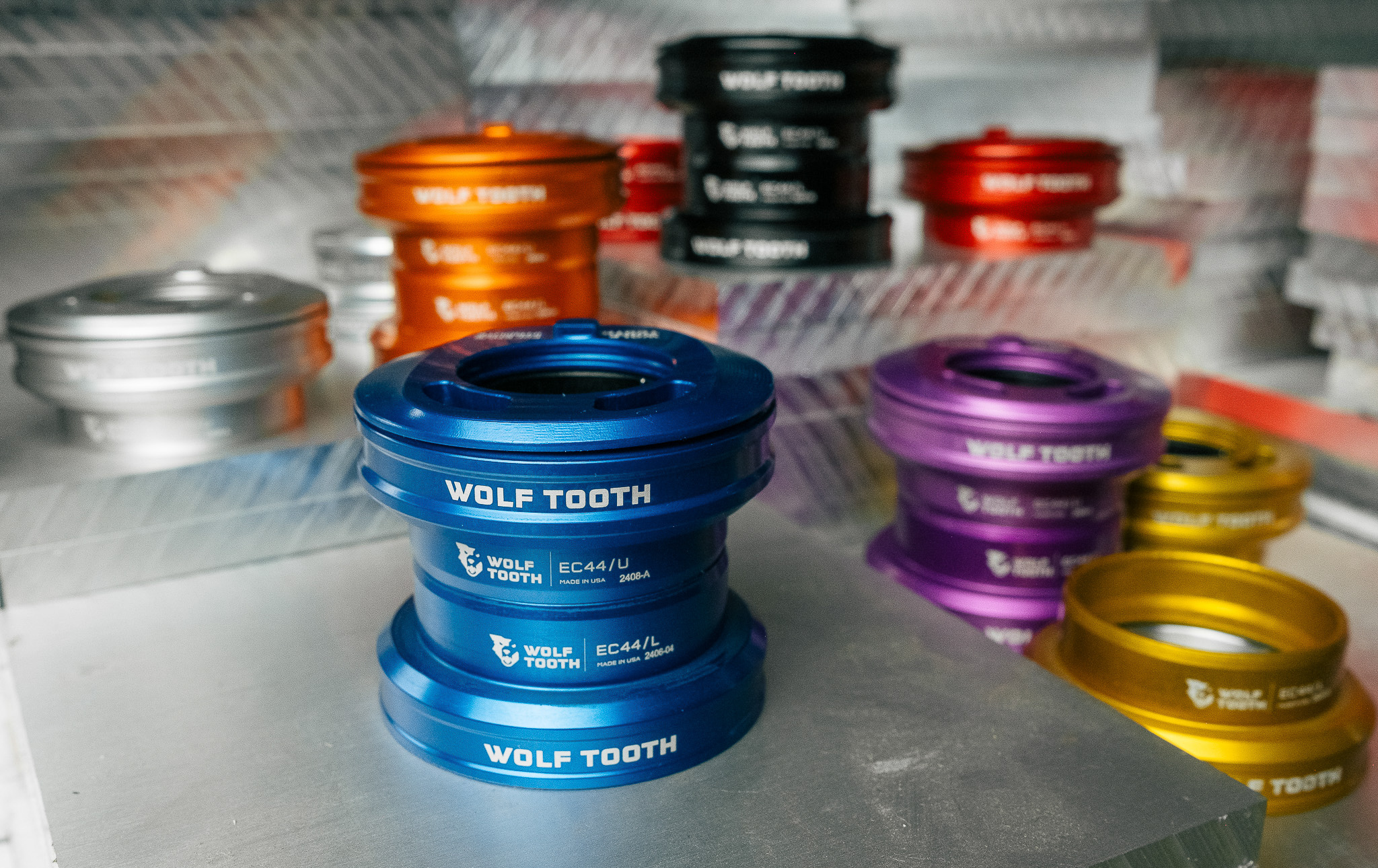
🐺 Wolf Tooth Components has announced its new Premium Internal EC44 Headset designed specifically for the ENVE IN-Route System. Designed for frame builders using Enve’s internal routing system, the headset should offer riders a lower stack, lightweight headset option and – hopefully – better sealing, meaning less frequent bearing replacements.
Manufactured in Minnesota using 6061 aircraft-grade aluminium, the headset features a 15.8 mm stack-height top cap, the lowest currently available for the Enve System. The Wolf Tooth headset is engineered to provide a smooth transition from cockpit to headset to frame. The combined upper and lower units’ claimed weight is 116 g.
Wolf Tooth points to its triple-sealed system, claiming this ensures superior protection against the elements, which is only a good thing with fully integrated bikes where maintenance can be complex. The headset uses Enduro stainless steel bearings with a dual-lip seal and a high-pressure waterproof lubricant to enhance durability further.
The headset is covered by a lifetime warranty and replacement parts (and install guides) will be available under Wolf Tooth’s Right to Repair policy.
The headset is priced at US$219.95 and is available in seven anodised colors, aligning with other Wolf Tooth components for a cohesive aesthetic., affirming the company’s commitment to sustainability and customer service.
Quick review

Mortal Hydration: I’ve recently been testing the Mortal Hydration mixes. I’ll get to the electrolyte mix in a second, but I can’t mention the drink mix without taking a second to mention the branding strategy. With slogans like “don’t die in your next workout” and “Badass”, “no icky stuff”, “bonk defying electrolytes” and “fight death” logos plastered all over the packaging the branding is a little cheesy for my liking. Your tastes may differ, though.
As for the actual drink, with regular 450 mg of electrolytes and “salty” 1,000+ mg options. With four different flavours there’s a mix for most tastes and requirements. Mortal’s recommendation is to use its regular mix for “normal” workouts and the salty option for more intense rides.
Where Mortal felt a little dead to me, though, is on the single-serve packaging. Even the big bags are in fact 25 individual servings and as such 25 additional wrappers. Mortal claims the servings are perfectly sized for 22 and 26 oz bottles and as such eliminate the risk of “overscooping.”
They are also super sweet, probably thanks to the Stevia, a natural sweetener said to be 300 times sweeter than sugar and derived from the leaves of the Stevia rebaudiana plant, but one that’s not without its sceptics with recent research suggesting it may have negative implications for gut health.
With such sweetness I can’t imagine ever relying solely on Mortal in my bottles. That said, Mortal isn’t suggesting you should, pointing out “the goal with Mortal is not to add carbs to your high-carb fuelling plan” but to offer an electrolyte option without adding even more carbs to a nutrition plan. It’s an electrolyte / hydration drink and one or two bottles is likely all you’d ever build into a nutrition plan for most events.
The recent trend towards high-carbohydrate drink mixes have seemingly come at the cost of electrolyte consumption. Ideally, we’d see brands combine both high-carb and electrolytes in one bottle, perhaps along the same lines as Silca’s new wax chips allowing riders to tailor the exact carb and electrolyte mix to their needs.
Overall, I found Mortal a handy way to keep on top of electrolytes and a gentle reminder we can’t ignore this hydration essential, but the sweetness combined with the branding and packaging means I probably won’t be rushing to order replacement sachets.
Until next time …
That’s all folks! All that’s left to say is thank you for reading the newsletter, listening to Performance Process and an extra thanks to all of you who have signed up already as Escape Collective members.
Sign up here to get future editions of this newsletter and others from the Escape Collective network straight into your email inbox.
Until next time … Trust the process.
Did we do a good job with this story?
